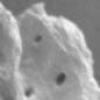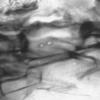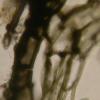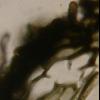
15-12-2025 07:09
 Danny Newman
Danny Newman
indet. Rutstroemiaceae sp. on unk. fallen leavesMc

15-12-2025 21:11
 Hardware Tony
Hardware Tony
Small clavate hairs, negative croziers and IKI bb

15-12-2025 15:54
 Johan Boonefaes
Johan Boonefaes
Unknown anamorph found on the ground in coastal sa

15-12-2025 15:48
 Danny Newman
Danny Newman
Melanospora cf. lagenaria on old, rotting, fallen

15-12-2025 07:05
 Danny Newman
Danny Newman
Pseudosclerococcum golindoi (det: Zotto)near Cosb

15-12-2025 11:49
 Danny Newman
Danny Newman
ITS sequences from the following two collections B

15-12-2025 12:34
 Danny Newman
Danny Newman
indet. Rhytismataceae on oak leafnear Purchase Roa

09-12-2025 12:06
 Andgelo Mombert
Andgelo Mombert
Bonjour,Je recherche l'article concernant Hypobryo
Bertia-related pyrenomycete?
Hans-Otto Baral,
11-03-2009 22:48
 Hi
HiI have here a pyreno with unitunicate asci that dissolve during maturity, the spores of which remind me of Bertia latispora. But the perithecia are smooth.
Descr.: 0.3-0.5 mm diam. Asci 6-8-spored, unitunicate, IKI-. Spores 23-35 x 8-11 µm, containing many minute LBs, 1-septate, very variable in shape.
Subaquatic on very rotten wood of Salix (or Populus), N-Germany (near Rehna, leg. T. Richter).
Zotto
Hans-Otto Baral,
11-03-2009 22:51
Hans-Otto Baral,
13-03-2009 22:17

Re:Bertia-related pyrenomycete?
Sorry, I corrected in the previous message that the perithecia often collapse.
Zotto
Zotto
MARIA VIRGINIA BIANCHINOTTI,
17-03-2009 21:10
Re:Bertia-related pyrenomycete?
Dear Zotto,
Have you seen Munk pores? Your ascospores are slightly similar to those of Bertia pulneyensis.
Virginia
Have you seen Munk pores? Your ascospores are slightly similar to those of Bertia pulneyensis.
Virginia
Hans-Otto Baral,
17-03-2009 22:32

Re:Bertia-related pyrenomycete?
Dear Maria
thanks, is it an Indian species? Where is it described? What do you mean with Munk pores?
Zotto
thanks, is it an Indian species? Where is it described? What do you mean with Munk pores?
Zotto
MARIA VIRGINIA BIANCHINOTTI,
18-03-2009 15:15
Re:Bertia-related pyrenomycete?
Yes, it is an Indian species described by Subramanian & Sekar in Kavaka 18: 19-90 (1990). Munk pores are small perforations that appear in the ascomatal cells. they are typical (but not exclusive) of the Coronophorales. Here are 2 photos of them.
MARIA VIRGINIA BIANCHINOTTI,
18-03-2009 15:15
Re:Bertia-related pyrenomycete?
Yes, it is an Indian species described by Subramanian & Sekar in Kavaka 18: 19-90 (1990). Munk pores are small perforations that appear in the ascomatal cells. they are typical (but not exclusive) of the Coronophorales. Here are 2 photos of them.
Virginia
Virginia
MARIA VIRGINIA BIANCHINOTTI,
18-03-2009 15:17
Hans-Otto Baral,
18-03-2009 18:45

Re:Bertia-related pyrenomycete?
Dear Maria
so they are pores in the wall of the peridial cells? Are they in the lateral wall between the peridial cells? Present in every cell or only locally? I will try to locate this feature.
Zotto
so they are pores in the wall of the peridial cells? Are they in the lateral wall between the peridial cells? Present in every cell or only locally? I will try to locate this feature.
Zotto
MARIA VIRGINIA BIANCHINOTTI,
18-03-2009 18:57
Re:Bertia-related pyrenomycete?
Dear Zotto, yes they are pores, not in every cell, randomly, 1 or2, sometimes more per cell, also in the lateral wall between cells. I´ve put a pdf of a paper in which you´d see more images.
Virginia
Virginia
Hans-Otto Baral,
22-03-2009 21:46
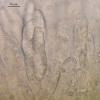
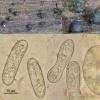
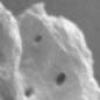
 7145.pdf
7145.pdf